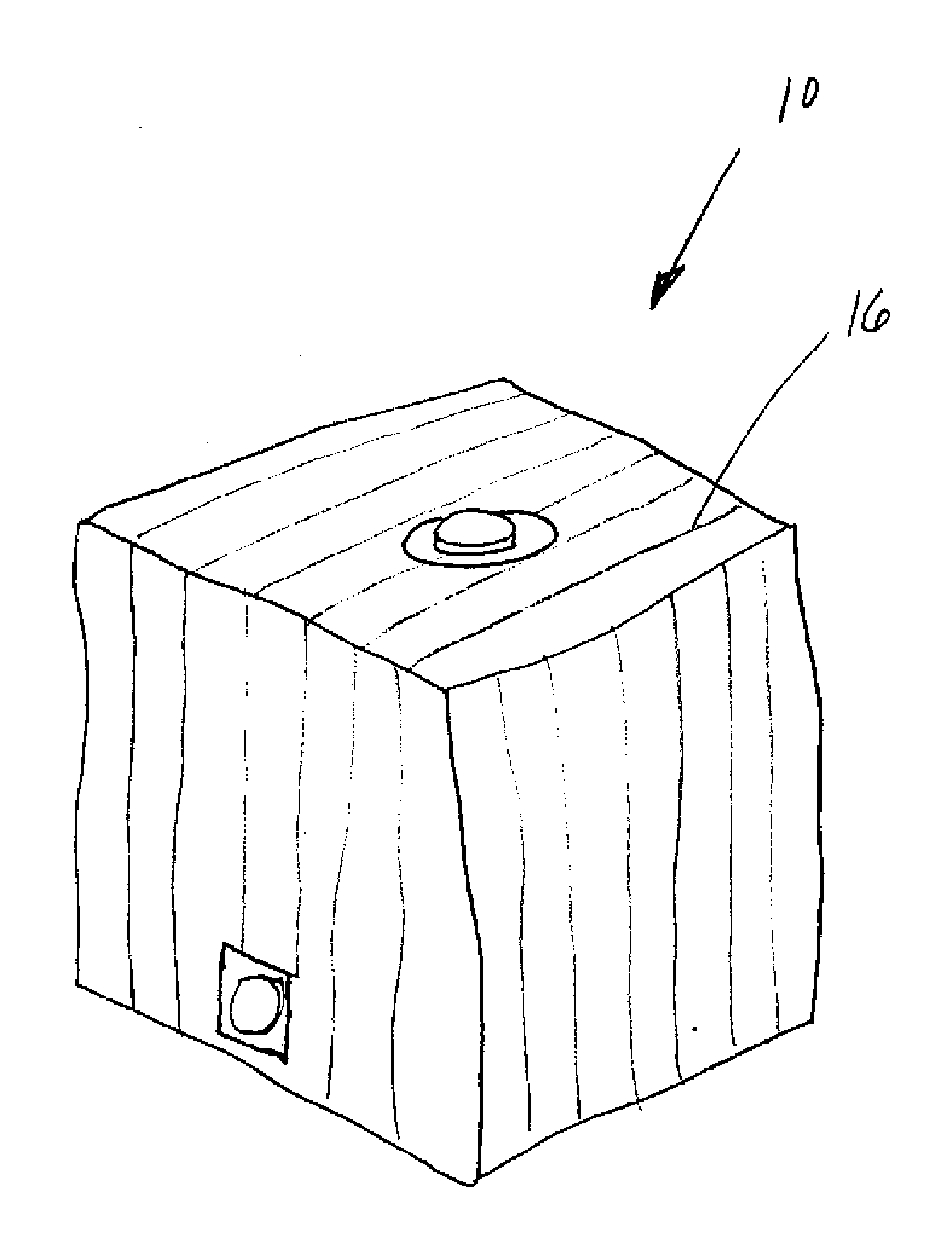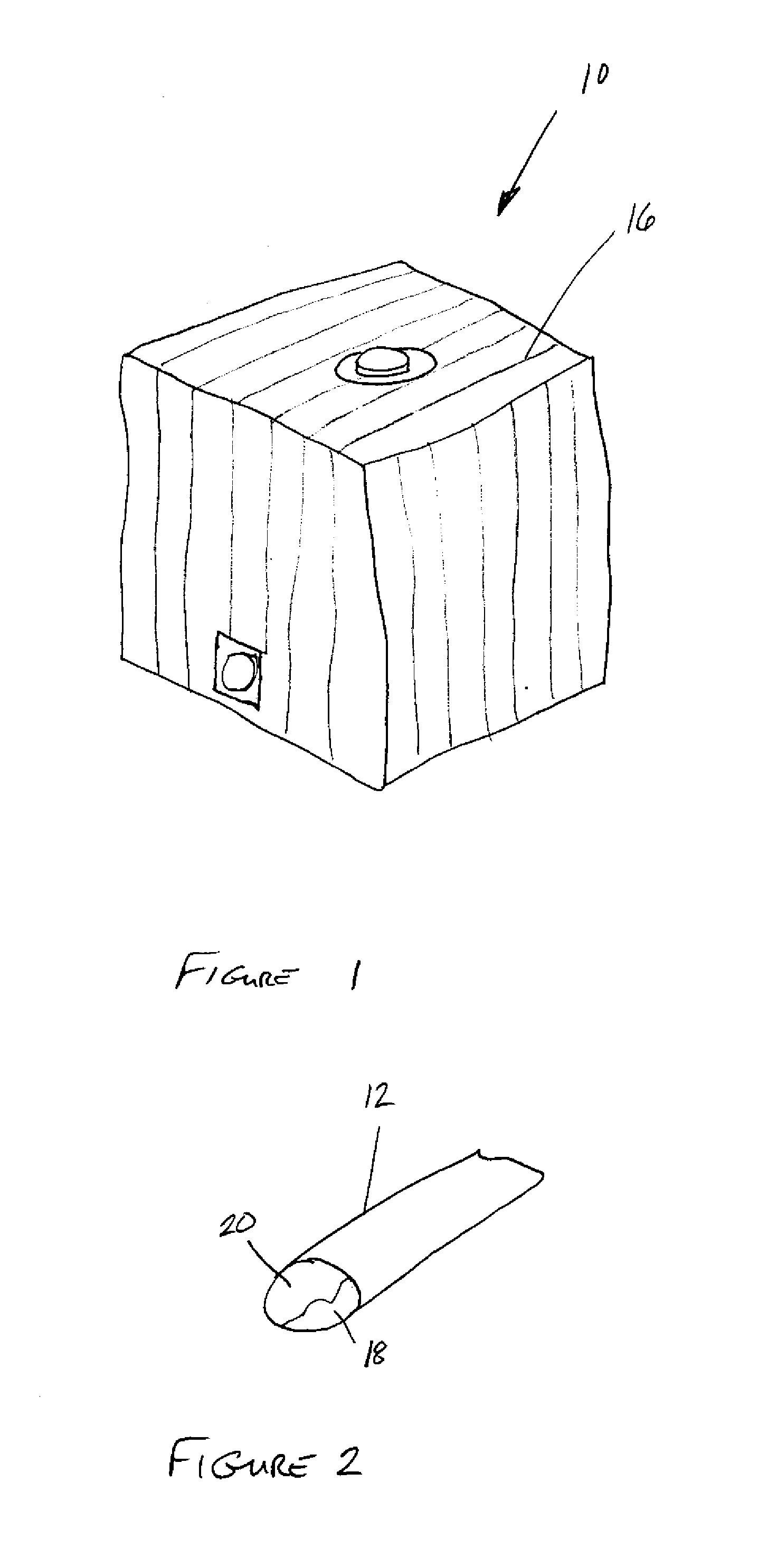Flexible intermediate bulk container having optimum discharge of hazardous charge
a technology of hazardous charge and flexible bulk containers, which is applied in the field of containers, can solve the problems of high-charged materials entering flexible bulk containers that can create static electricity on the container walls, and the discharge of high-charged materials can be uncomfortable for workers handling such containers, and achieve the effect of optimum resistan
- Summary
- Abstract
- Description
- Claims
- Application Information
AI Technical Summary
Benefits of technology
Problems solved by technology
Method used
Image
Examples
Embodiment Construction
[0018] As shown in FIGS. 1-4, the invention is directed to a flexible container 10 that enables optimum discharge of hazardous charges without combustion of the materials contained with the flexible container. The flexible container 10 may be formed using a unique electrostatic yarn 16 that has increased resistance such that the flexible containers 10 need not be grounded. Nevertheless, the flexible container 10 may also be grounded in those systems in which it may be beneficial to ground the container 10. The electrostatic yarn 16 may include a metallized higher resistance yarn 12. As used herein, a “metallized higher resistance yarn”16 may be any yarn having a metal thereon or therein and having a resistance in the range of from about 108 to about 1010 Ohms. The typical denier per filament of the metallized higher resistance yarn 16 may between one and five denier. The electrostatic yarn 16 used in forming the flexible container 10 may be formed from a metallized higher resistance...
PUM
| Property | Measurement | Unit |
|---|---|---|
| resistance | aaaaa | aaaaa |
| resistance | aaaaa | aaaaa |
| resistance | aaaaa | aaaaa |
Abstract
Description
Claims
Application Information
 Login to View More
Login to View More - R&D
- Intellectual Property
- Life Sciences
- Materials
- Tech Scout
- Unparalleled Data Quality
- Higher Quality Content
- 60% Fewer Hallucinations
Browse by: Latest US Patents, China's latest patents, Technical Efficacy Thesaurus, Application Domain, Technology Topic, Popular Technical Reports.
© 2025 PatSnap. All rights reserved.Legal|Privacy policy|Modern Slavery Act Transparency Statement|Sitemap|About US| Contact US: help@patsnap.com



